Take a scenic drive along the King’s Highway in Jordan between Amman and Petra for a 250km/155-mile road trip featuring Crusader castles, Biblical sites, spectacular gorges and viewpoints.
* This site contains affiliate links, where I get a small commission from purchases at no extra cost to you.
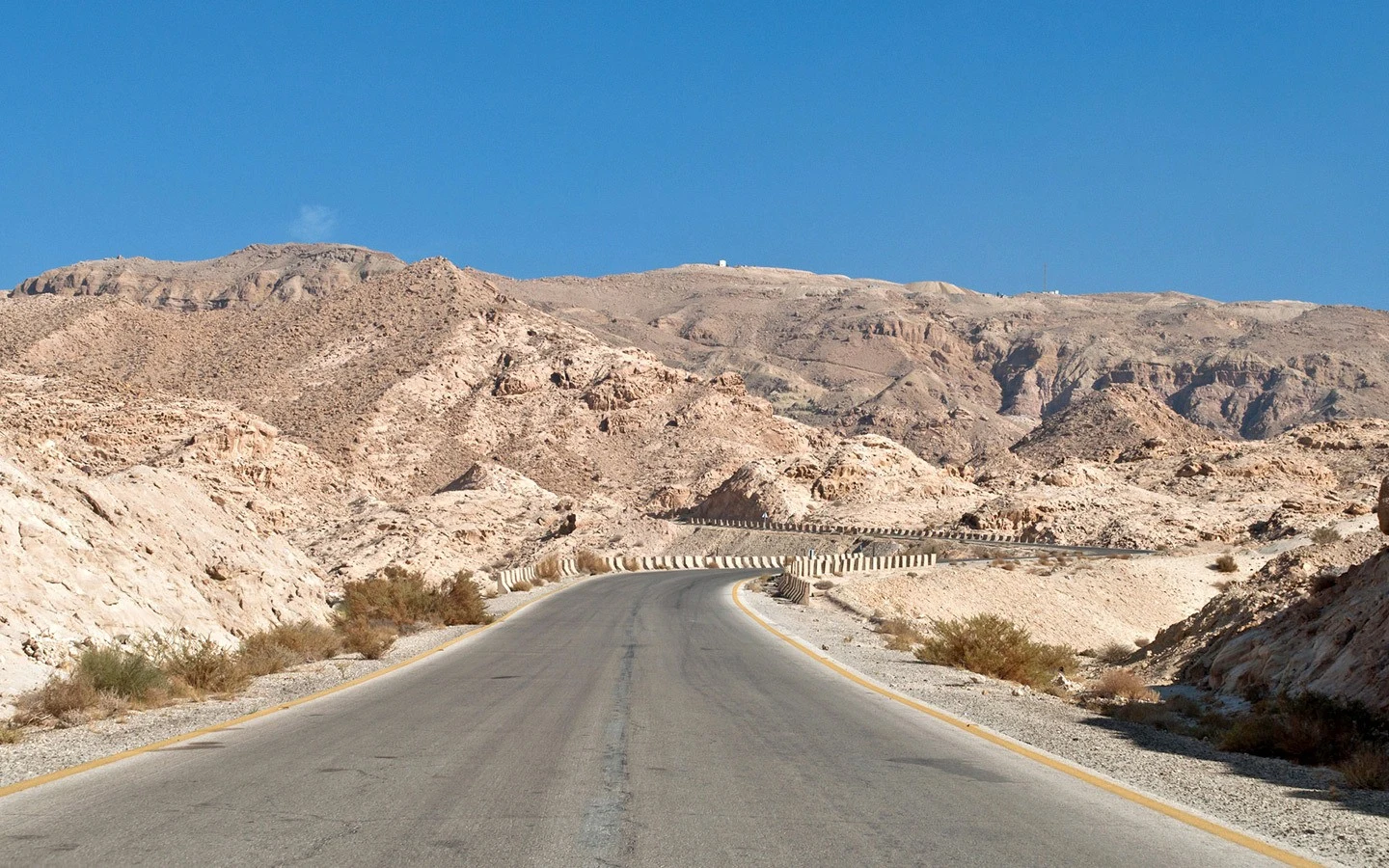
Cutting across the heart of Jordan, the King’s Highway has been used as a trade route through the Middle East for 5000 years. It originally ran all the way from Heliopolis in Egypt, through Jordan and into Syria. It was used by the Nabataeans to carry spices, fortified by the Romans and followed as a pilgrimage route by Christians and Muslims.
Today it’s one of the ways you can travel from the Jordanian capital Amman to the ancient city of Petra – a journey most visitors to Jordan will make during their trip. The fastest route is the modern Desert Highway (Highway 15), which takes around 3.5 hours.
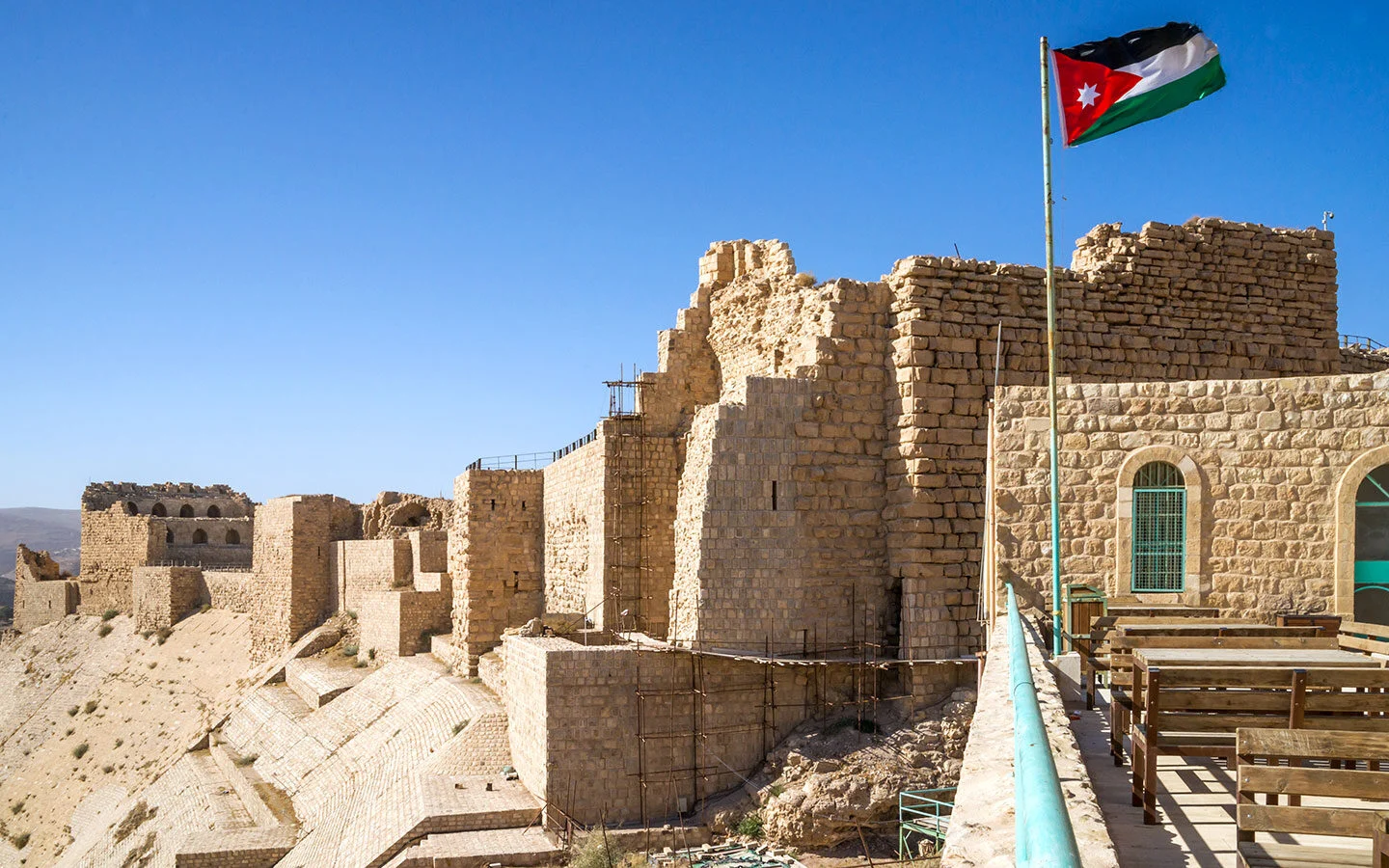
There’s also the route along the Dead Sea (Highway 65). But the most scenic option is the King’s Highway (Highway 35). It might take longer – a minimum of 4.5 hours without stops – but the journey is part of the adventure, with Crusader castles, Byzantine churches, Roman mosaics, Biblical sites and spectacular gorge views along the way.
So if you’re planning on driving the King’s Highway (either in a rental car or by hiring a car and driver), here’s everything you need to know. We’ve highlighted the main stops on the route and a few possible diversions, and shared tips for making the most of the journey.
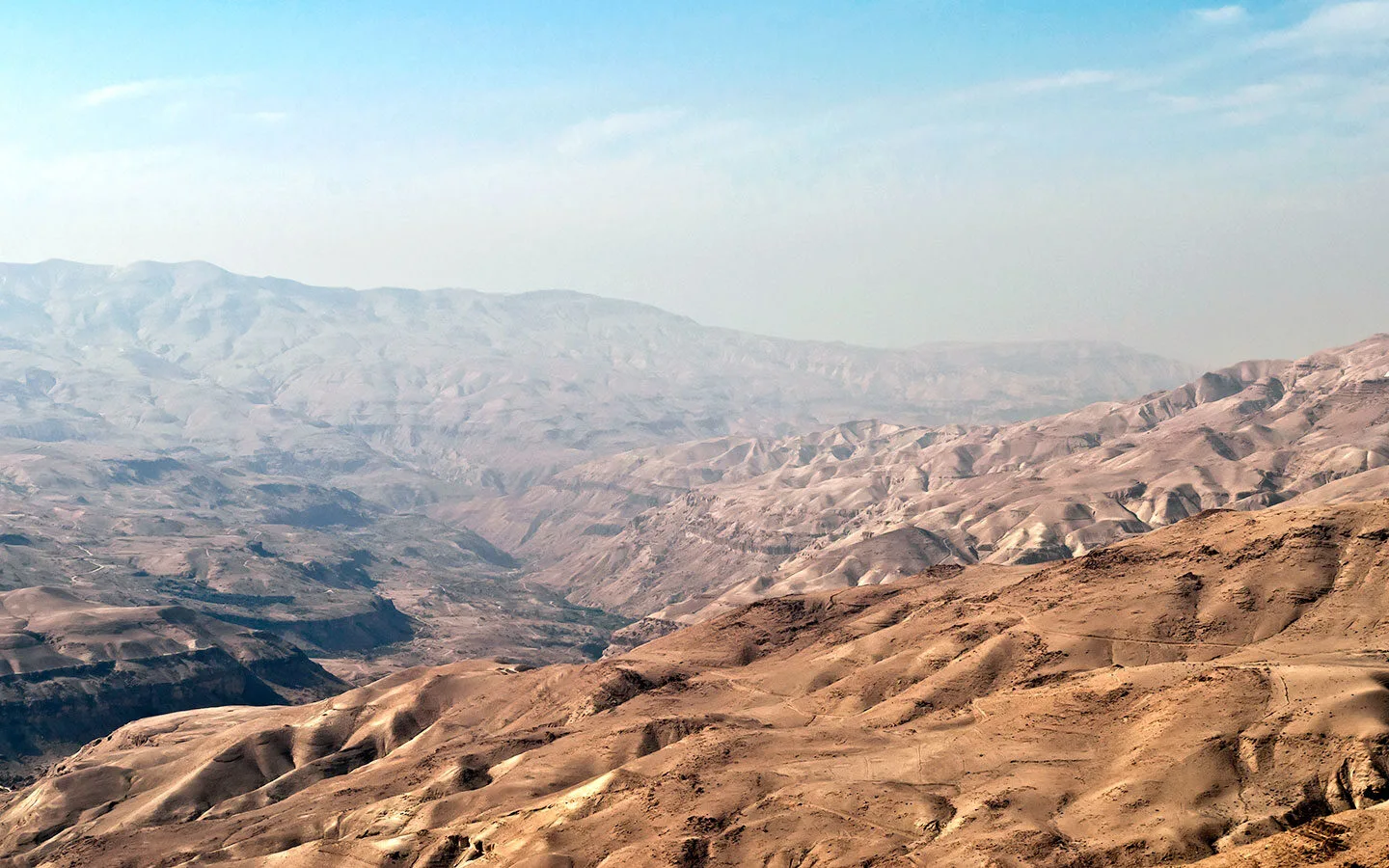
Tips for driving the King’s Highway in Jordan
Distances and driving times: The King’s Highway is around 250km/115 miles long and takes 4.5 hours to drive straight through. So allow a full day for the trip including stops, and set off as early as possible, especially in winter when the sun sets by 5.30pm.
Driving in Jordan: Compared to some Mediterranean destinations (ahem Italy), drivers in Jordan are fairly courteous and sensible, though watch out for a tendency to create extra lanes where they shouldn’t be, do U-turns in the road and a lack of signals.
The early part of the King’s Highway, from Amman through Madaba to Dhiban, is the busiest so expect some traffic, but it quietens down after that. And there are switchbacks and steep sections to navigate through Wadi Mujid where you’ll need to take it slowly.
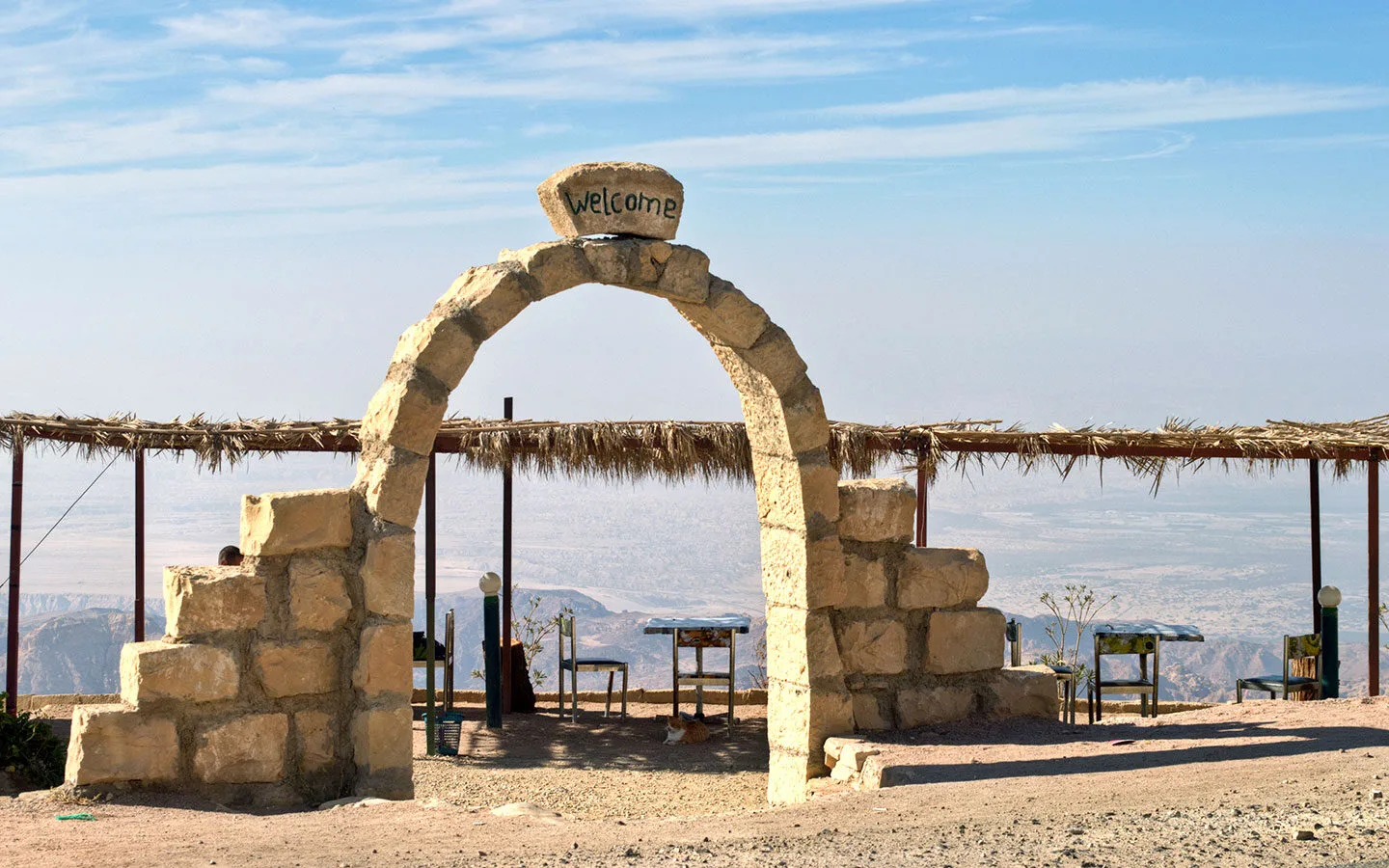
Avoid driving in Amman if you can: Having said that, Amman itself is a different matter – traffic is very busy and navigation is difficult, with complicated junctions. So it’s a good idea to hire a car from the airport to avoid driving through the city centre.
Beware the GPS: The King’s Highway isn’t hard to navigate as you’re staying on the same road for almost all of the journey. There are signposts in Arabic and English, but it’s also useful to have a GPS or use Google Maps. But beware that it might try and divert you off the King’s Highway onto the Desert Highway as it’s faster, so check the routing.
Watch out for speed bumps: Jordan’s roads have a huge amount of speed bumps. Sometime they’re signposted and marked, sometimes they’re not or are so faded you can’t see them. You’ll often find them on the edge of towns along the King’s Highway, but they also crop up in the middle of nowhere, so keep a look out and drive carefully.
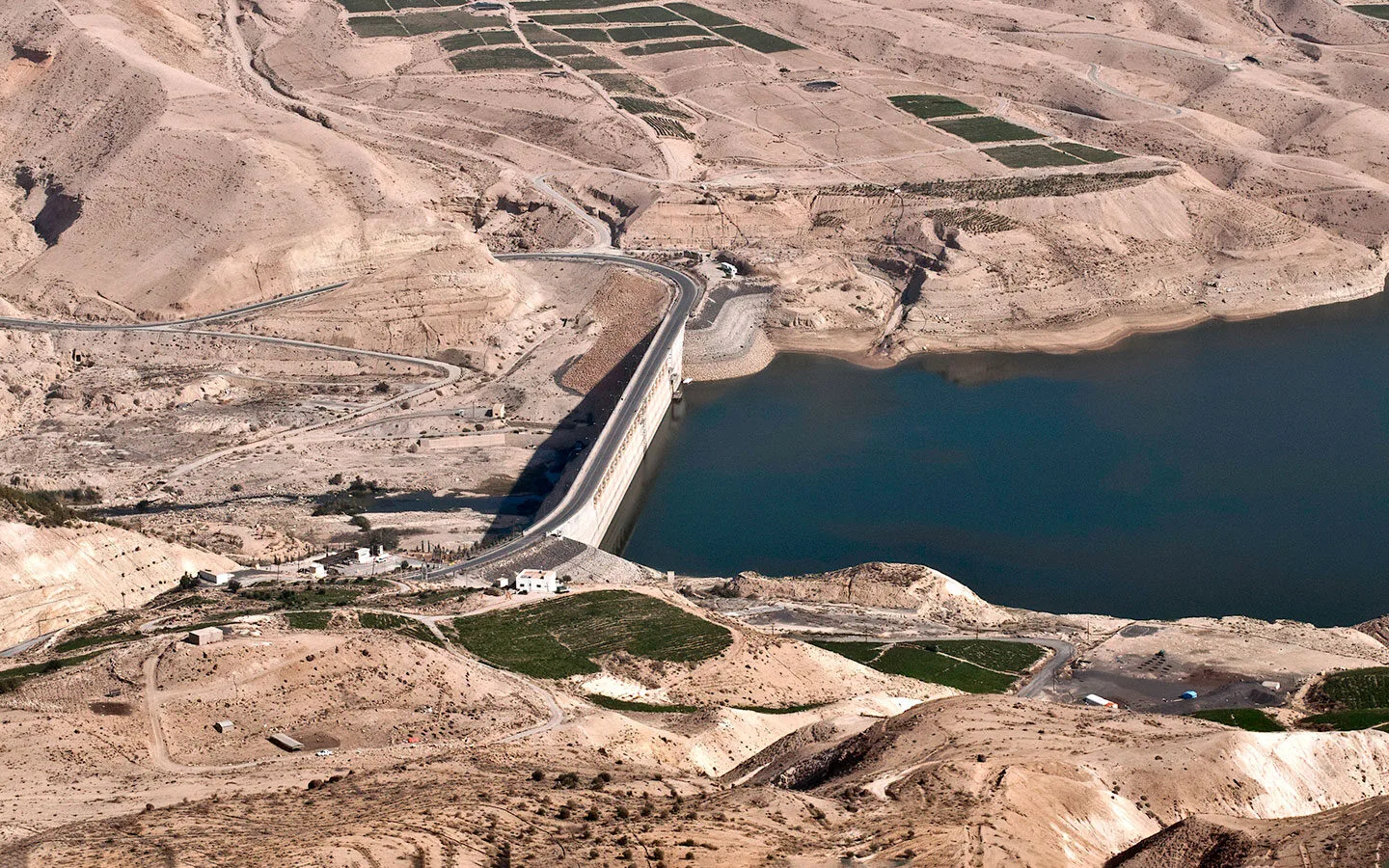
Prepare to stop: Speed bumps aren’t the only hazard to beware of – you might also come across a camel or goat on the road. And there are also occasional police or military checkpoints where you either have to stop or might be asked to. Normally they just ask where you are from or occasionally want to check your driving licence.
Avoid driving at night: There’s no road lighting on most of the King’s Highway, so it’s advisable to finish your road trip before it gets dark, partly so you can see the potholes and also as you’ll miss the stunning views along the way after the sun goes down.
Fill up where you can: There aren’t a lot of fuel stations along the King’s Highway, other than in larger towns. So it’s a good idea to fill up with fuel before starting your journey.
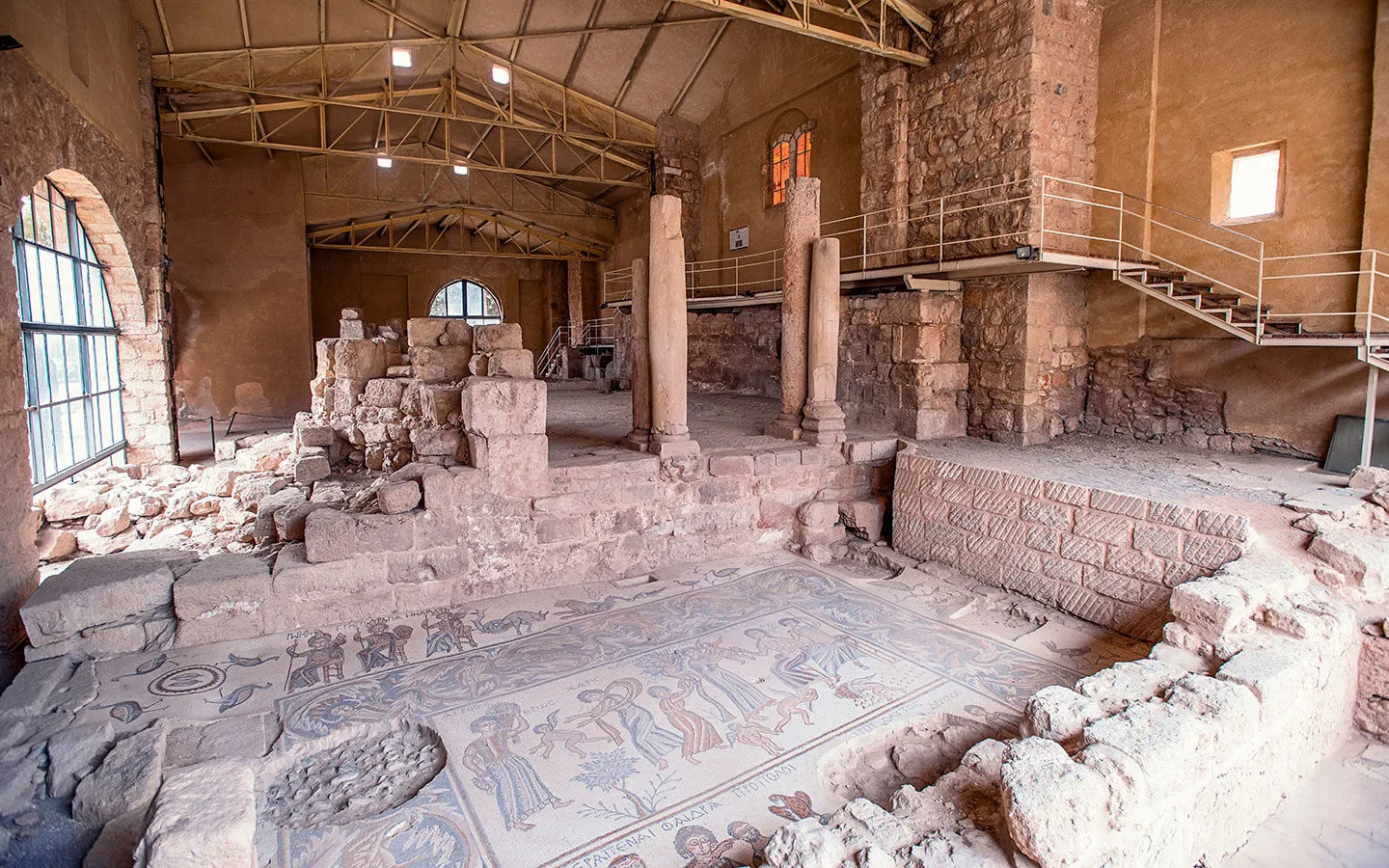
What to wear and bring with you: There are several sacred religious sites along the route, so bring appropriate clothing to cover your knees and shoulders if you want to visit them. There are plenty of places to stop for food and drink along the route.
Jordan Pass: The Jordan Pass is a sightseeing pass which covers entry to many of the sights along the King’s Highway, as well as entry to Petra. It costs JD70 (£81/$99) for one day at Petra, JD75 (£87/$106) for two days or JD80 (£93/$113) for three days.
If you don’t want to drive: If you can’t or don’t want to drive, you can still explore the King’s Highway. One option is to hire a car and driver for the day, which costs around JD90 (£104/$127). Most tours to Petra travel down the Desert Highway as it’s quicker, but there is a King’s Highway tour* available which stops off at the main sites.
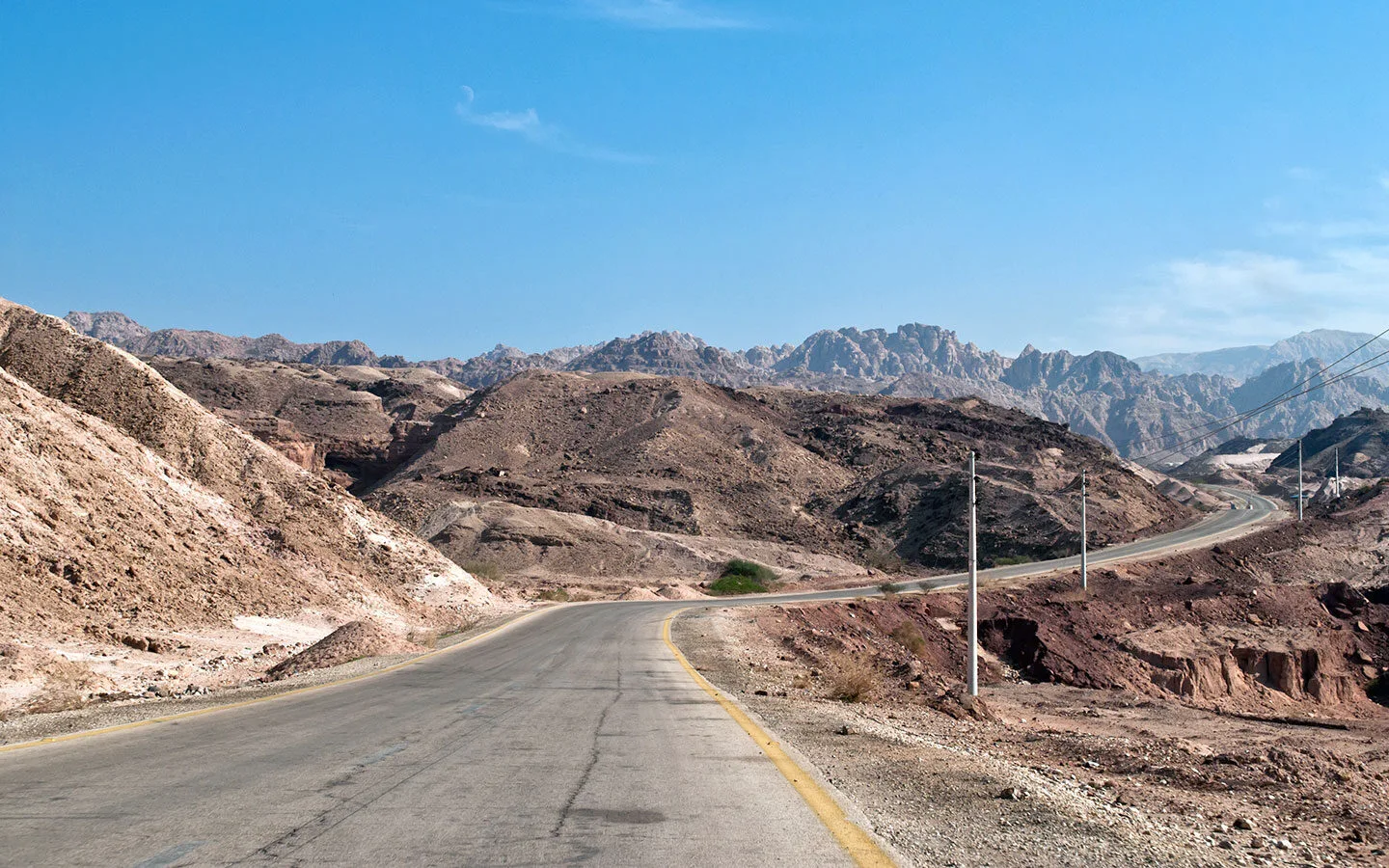
Map of the King’s Highway road trip
The map below shows the route of the King’s Highway from the outskirts of Amman to Petra, with the major sights and stops along the way marked in red. As people will be starting from different points in Amman, we’ve begun the route at the Madaba Bridge road junction, where the King’s Highway (35) splits from the Desert Highway (15).
This is around 20km/12 miles south of central Amman or 15km/9 miles north of Queen Alia International Airport, so you’ll need to factor a bit more driving into your timings depending on where you start from (and beware traffic in Amman can be slow going).
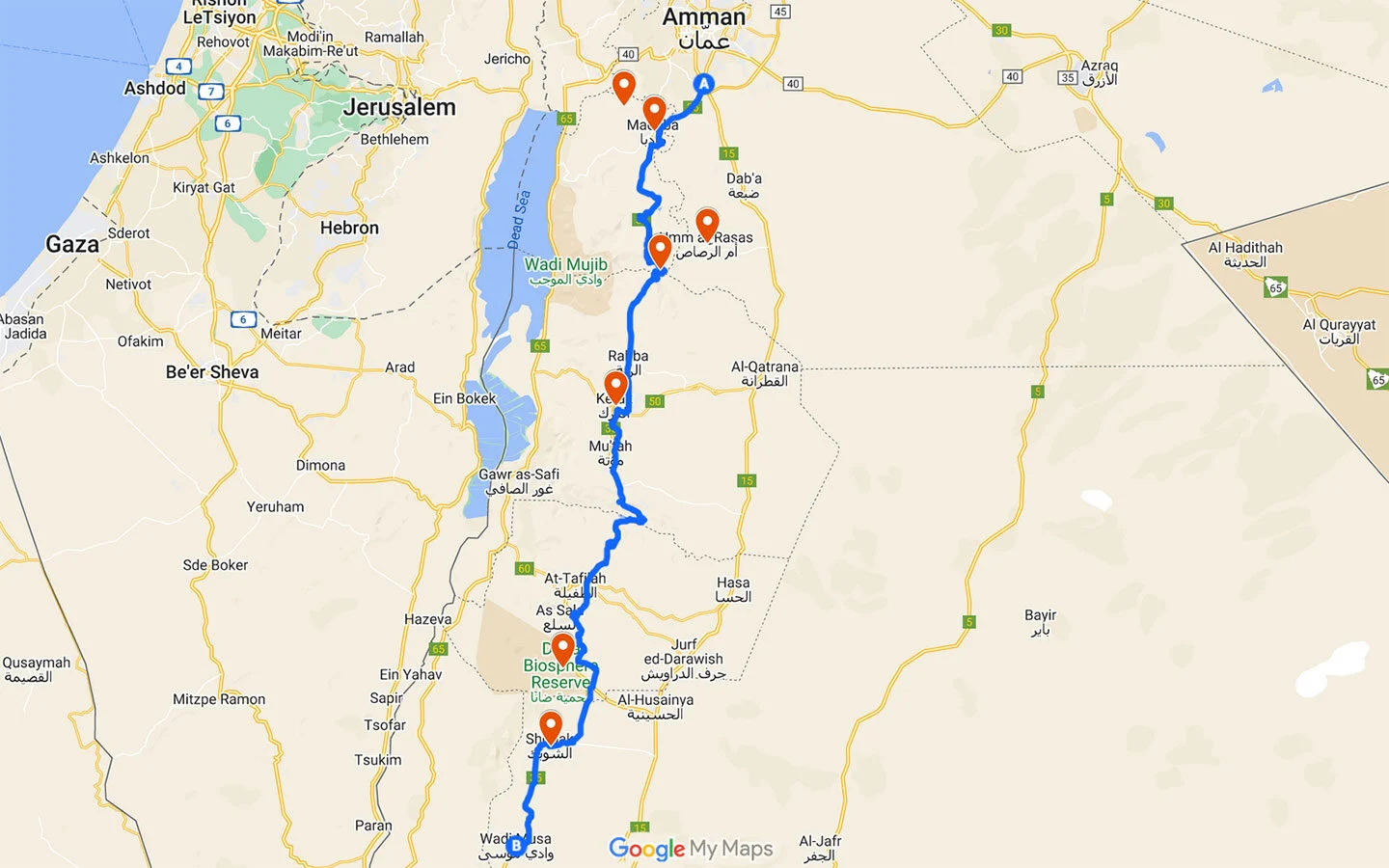
What to see along the King’s Highway
Madaba
From the Madaba Bridge, it’s 16km/10 miles (20 minutes’ drive) south to Madaba. The market town of Madaba has some of the best preserved Byzantine mosaics in the world, including one of the largest. The Madaba Map dates from the 6th century and is the oldest surviving map of the Holy Land, made up of over two million pieces of stone.
You can see the map on display in St George’s Church. And there are more mosaics at the town’s two open-air archaeological parks. Archaeological Park I (eastern section) features the oldest mosaic found in Jordan and the Church of the Virgin Mary.
And at Archaeological Park II (western section) you can see the Burnt Palace – a grand Byzantine mansion which was destroyed by fire and earthquakes but still has some original mosaics – and the Church of the Holy Martyrs. You can also visit the Church of the Beheading of John the Baptist, which has a 3000-year-old acropolis beneath it.
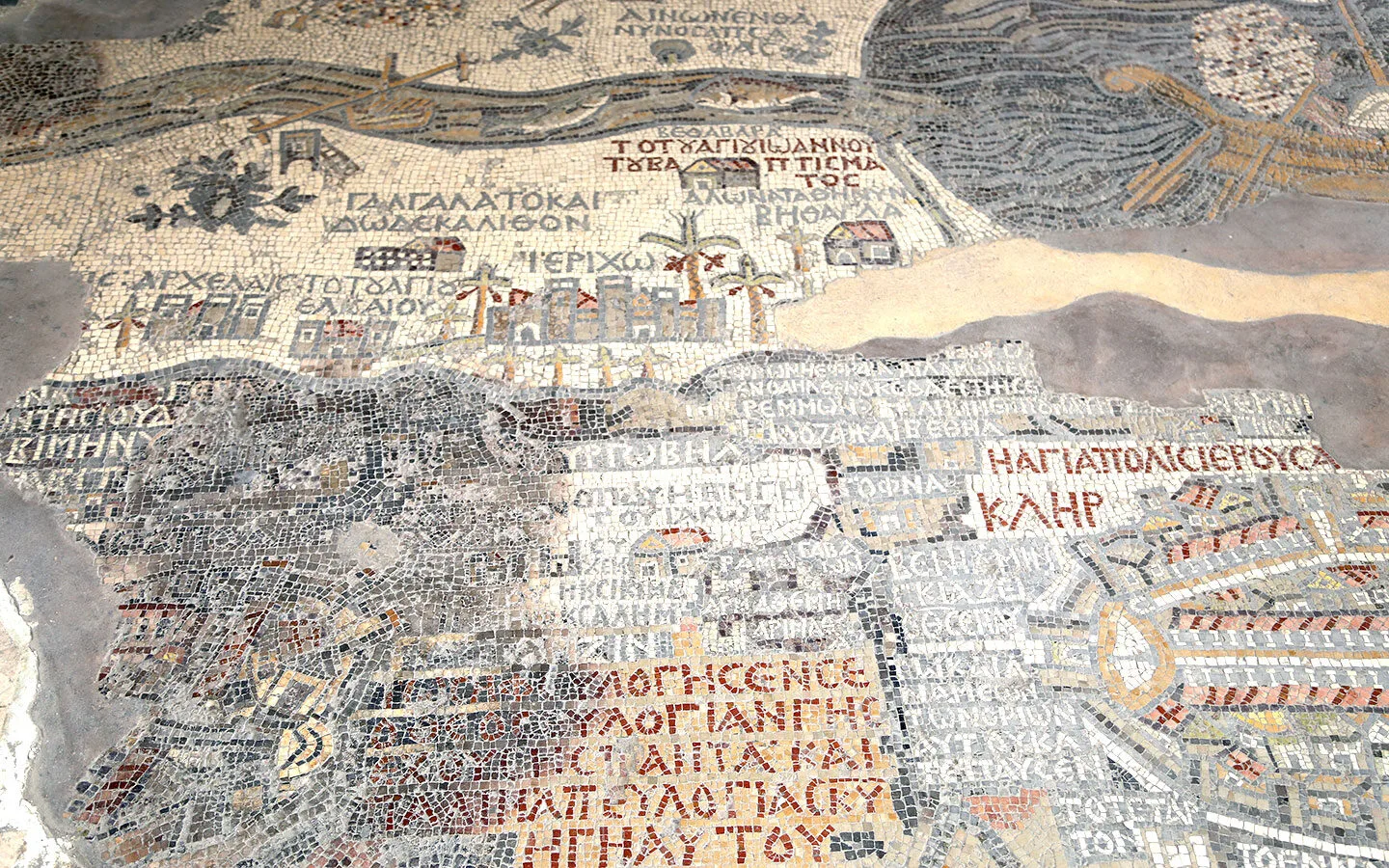
Mount Nebo (detour)
9km/5.5 miles (15 minutes’ drive each way) to the west of Madaba is Mount Nebo, which is well worth a short detour off the King’s Highway. This holy site is where Moses is said to have seen the Promised Land. From the Memorial Viewpoint at 2000 feet high there are wide-reaching views out to the Dead Sea, Bethlehem and Jerusalem.
There’s also the Moses Memorial Church at the summit, which is a sacred site for Christians. There’s been a church on this site since 393 AD and although its been altered and reconstructed over the years, there are some beautiful mosaics from 530 AD.
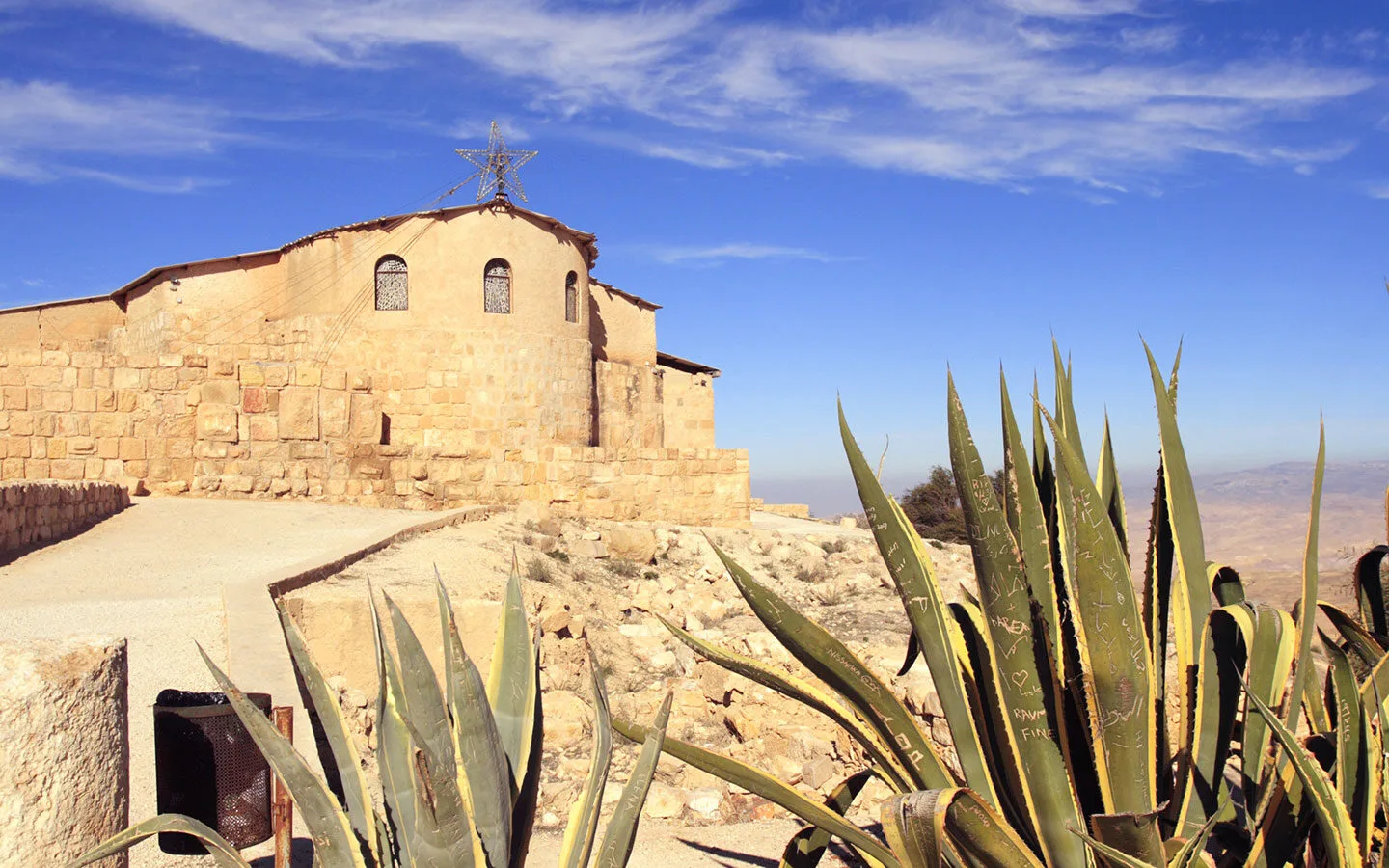
Umm ar-Rasas (detour)
Another detour off the route leaves the King’s Highway at Dhiban, 33km/21 miles south of Madaba, and takes you to the UNESCO World Heritage Site of Umm ar-Rasas. This ancient city was mentioned in both Old and New Testaments, and was later a Roman garrison. It’s around 16km/10 miles (17 minutes’ drive each way) off the King’s Highway.
Umm ar-Rasas has 16 churches and two towers, though they’re largely in ruins, and a lot of the site is still be excavated. You can see a mosaic floor in the Church of St Stephen though which is the largest in Jordan, featuring local flora and fauna and a map of the region.
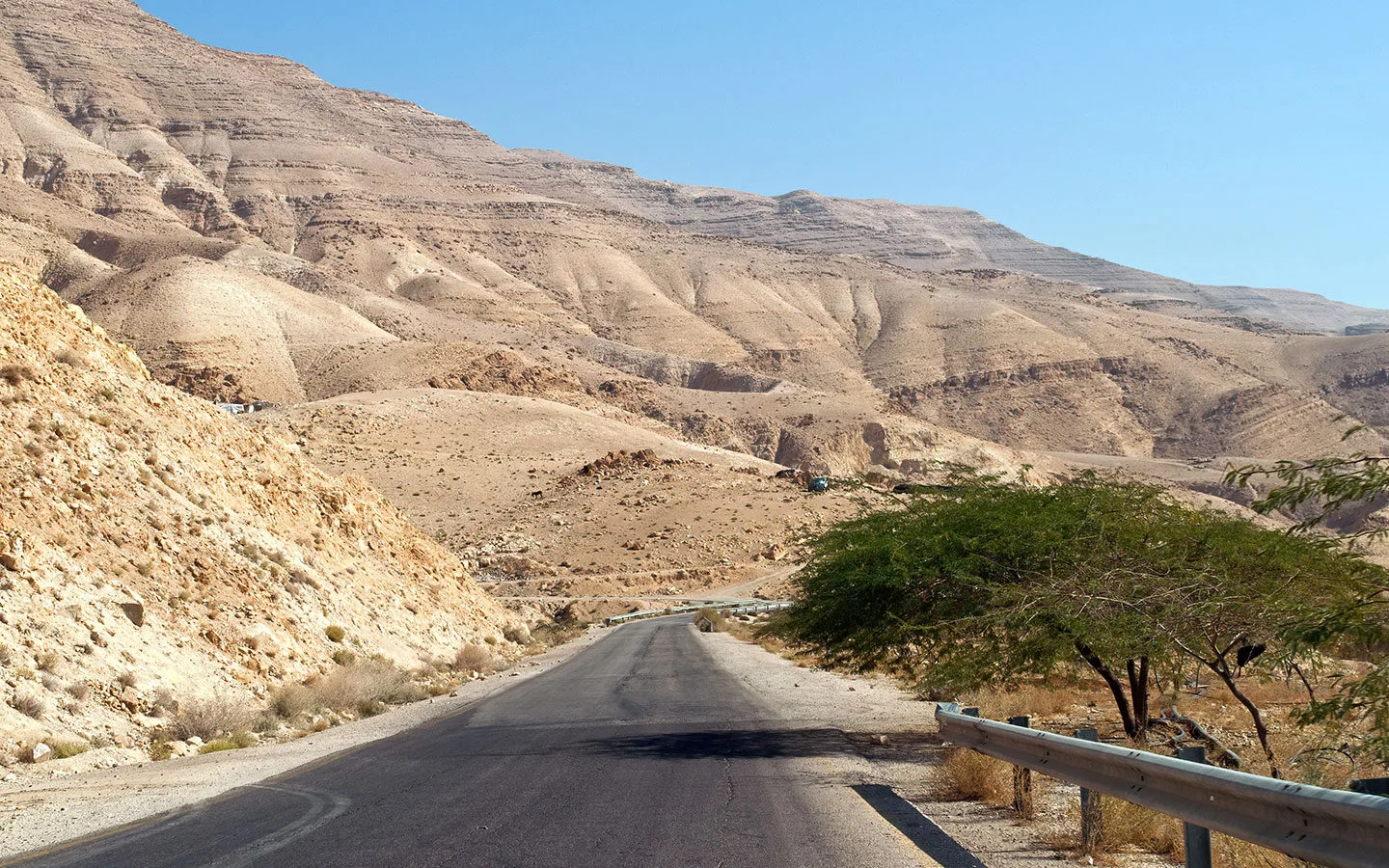
Wadi Mujib
Just south of Dhiban is Wadi Mujib – a 1300-metre-deep gorge which runs from the Dead Sea to the Desert Highway and has been nicknamed Jordan’s Grand Canyon. It’s one of the highlights of the King’s Highway, with panoramic views across miles of dry, sandy hills, contrasting with the deep green waters of the Wadi Mujib reservoir.
The road twists and turns its way down 9km/6 miles of switchbacks to the lowest point where it crosses the dam, then climbs back up again. There are several viewpoints along the way where you can stop to photograph the views. The landscape looks vast and empty, but you’ll find stalls at the prime viewpoints where you can buy drinks and snacks.
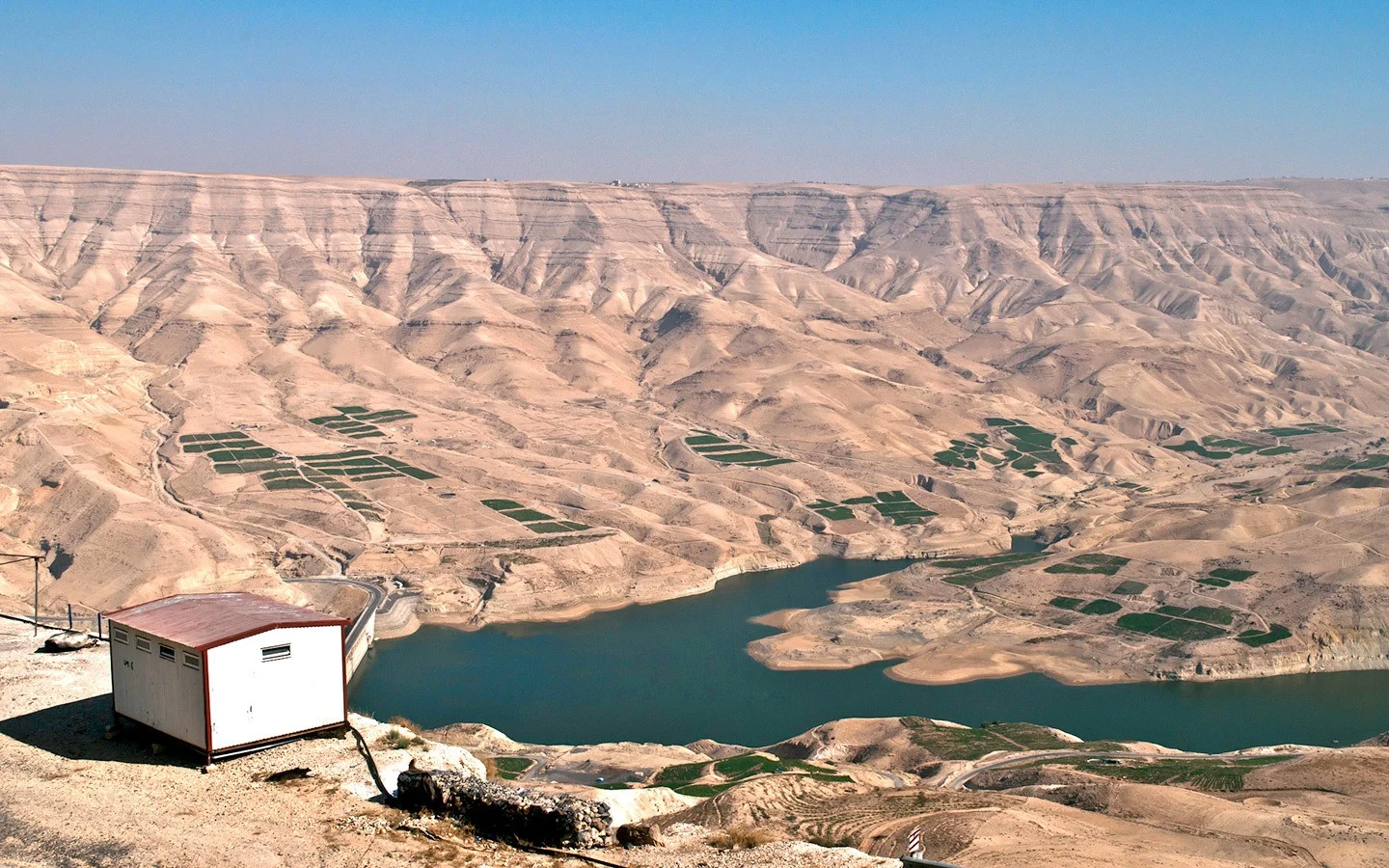
Al-Karak
After climbing back out of the gorge, it’s 36km/22 miles (50 minutes’ drive) south to Al-Karak. This hilltop city is dominated by the huge Kerak Castle, which was built in the 12th century and is one of the largest Crusader castles in the Middle East. As well as being a military base it was also where taxes were collected, making Al-Karak a rich place.
It’s a big site, with lots to see, so allow at least an hour for the main sights. As well as what you can see above ground, there are also three levels of underground passageways beneath (it’s a good idea to bring a torch as some areas are still undergoing restoration). And there are fantastic views out across the valley from the top of the ramparts.
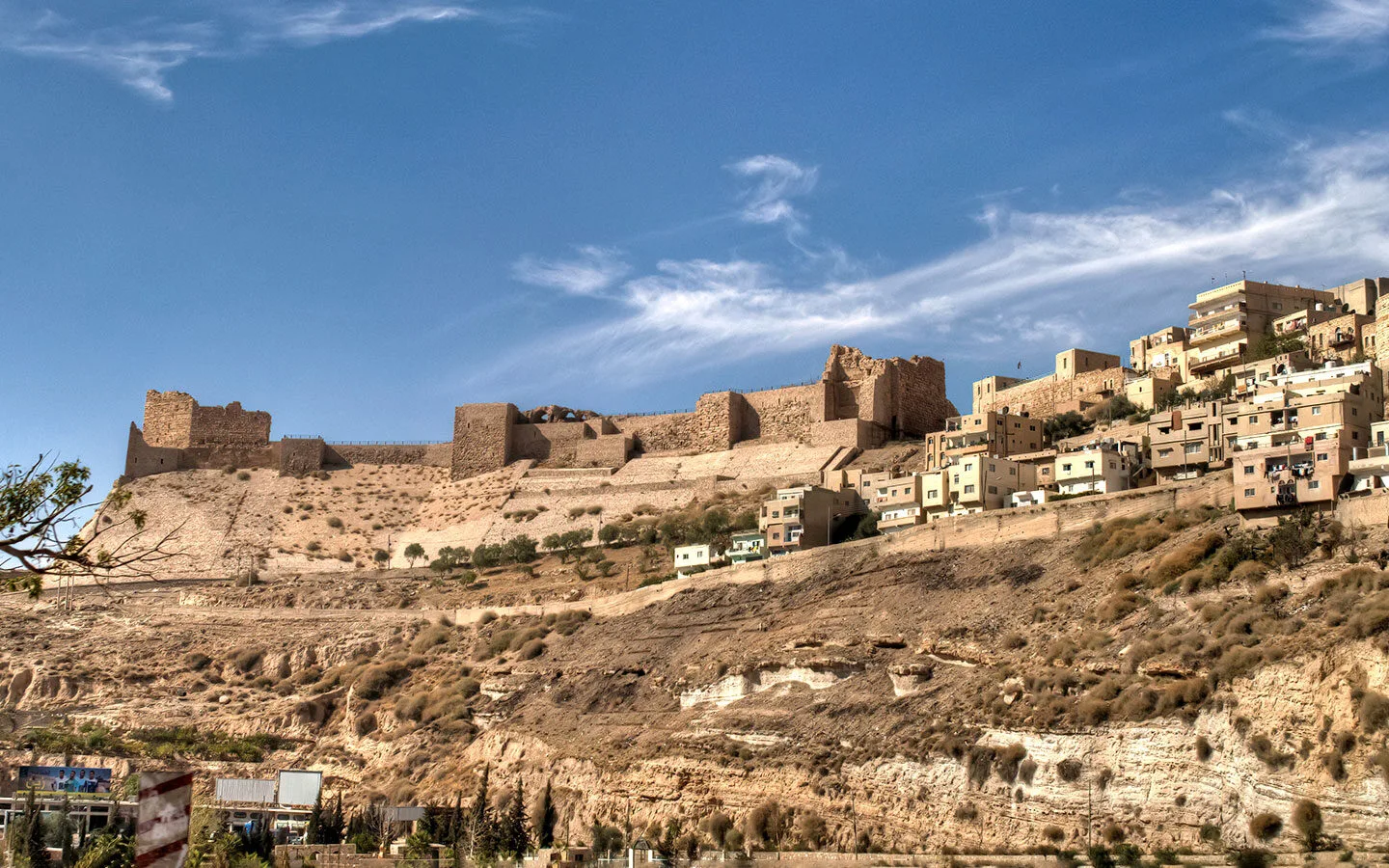
Shobak
The next stretch of the King’s Highway runs past small towns for 115km/71 miles (2 hours 15 minutes’ drive) to Shobak. Just before Shobak is the entrance to Dana Biosphere Reserve. Jordan’s largest nature reserve is home to rare desert animals like the Sand Cat and Syrian Wolf, and if you have extra time you can stay overnight and explore.
Shobak itself has another Crusader castle, which is smaller and less visited than Kerak’s. Shobak Castle (also known as Montreal) was built in 1115 in a remote location on top of Mont Real. There are ruined churches and a watchtower plus a (slightly claustrophobic) underground passage which leads down 375 steps to a hidden spring.
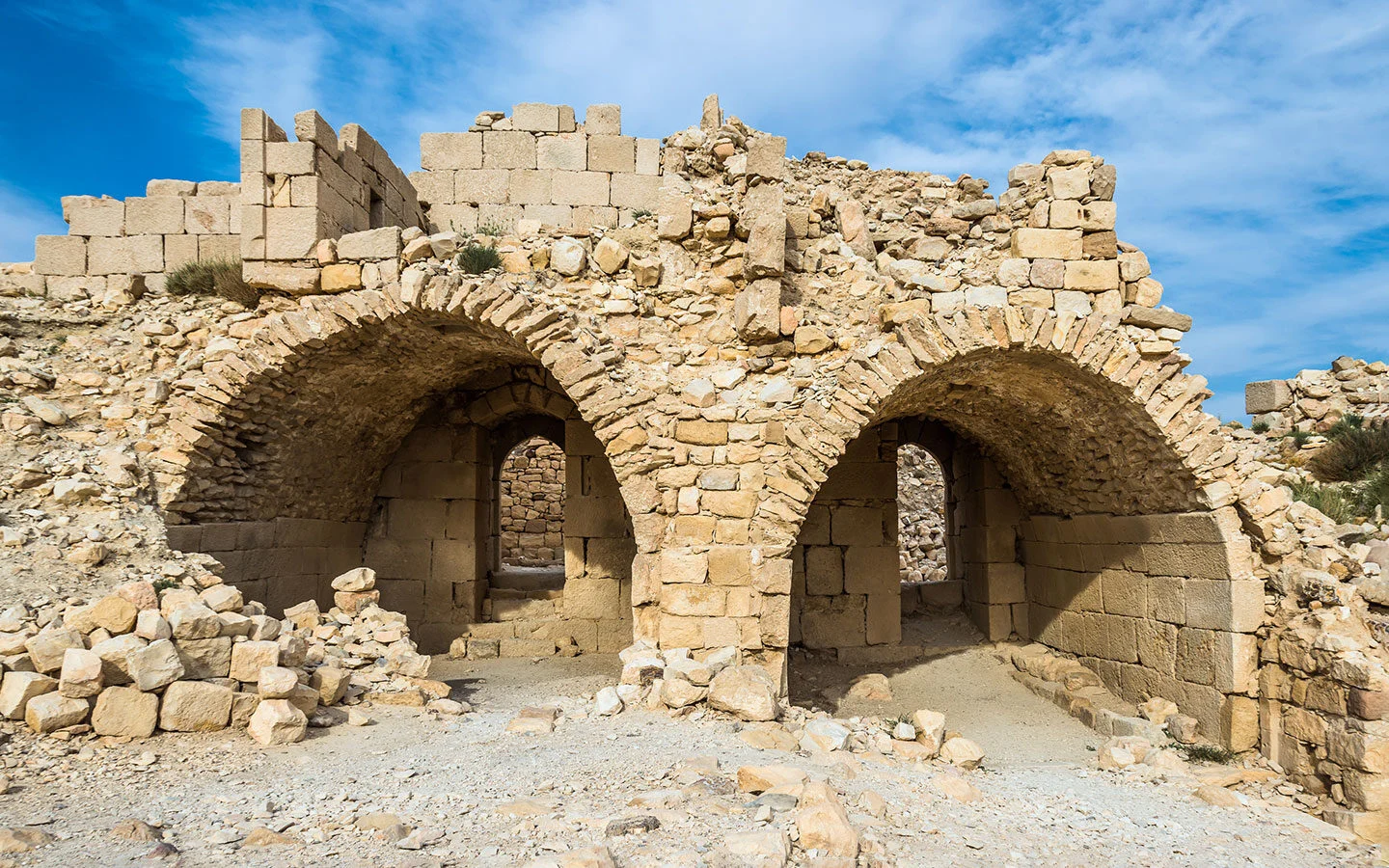
Wadi Musa
The last stretch of the King’s Highway runs for 28km/17 miles (35 minutes’ drive) south to Wadi Musa, the town which has grown up around the archaeological site of Petra. Traffic merges from the Desert Highway at Shawbak so the roads get busier here.
There’s a wide selection of places to stay in Wadi Musa. Closest to the entrance to Petra is the Petra Guest House*, which is right next to the visitor centre so you can get into the site early in the morning and miss the worst of the crowds. Or the Rocky Mountain Hotel* guest house up in the hills is a great-value, family-run option with breathtaking views.
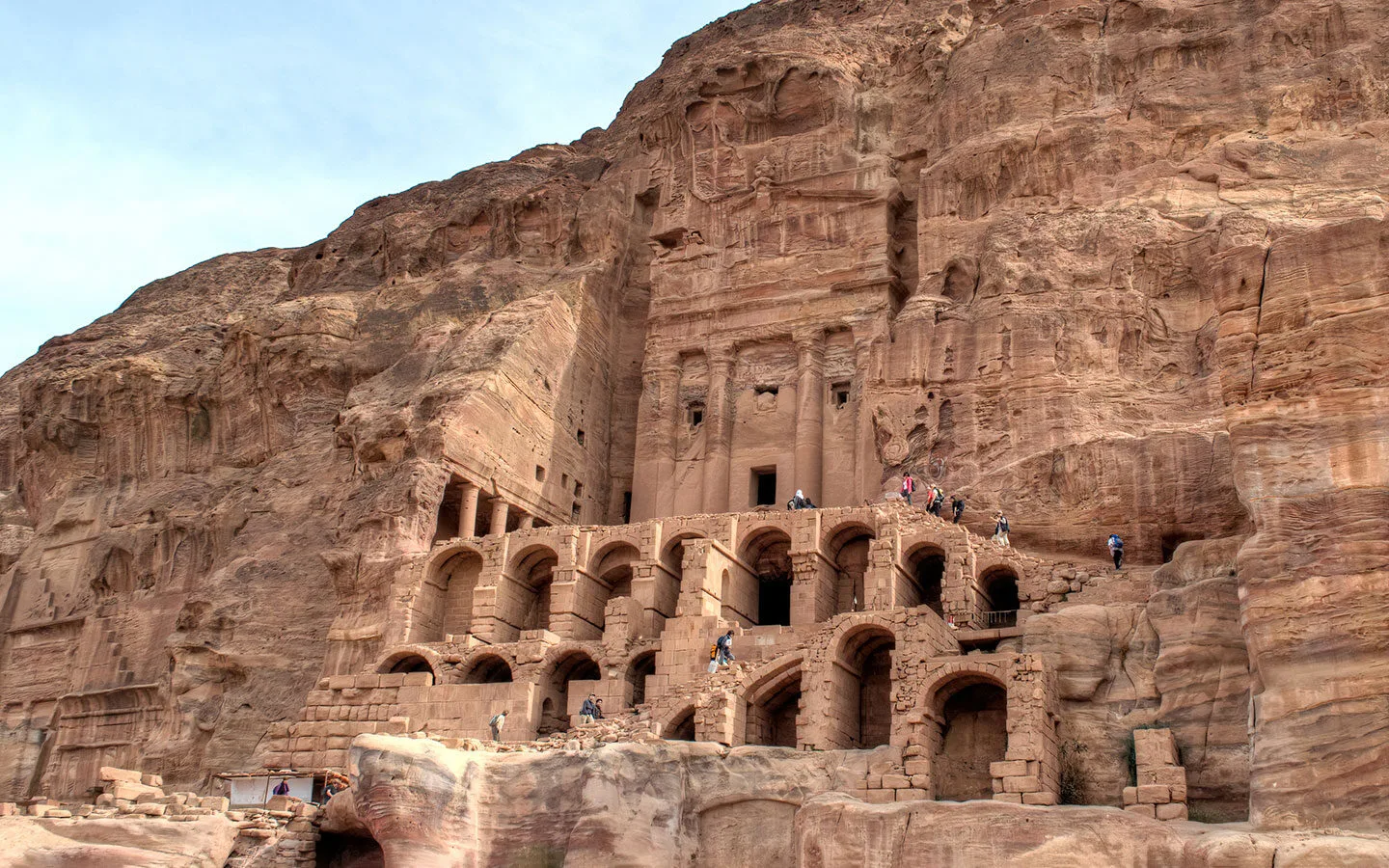
Save for later
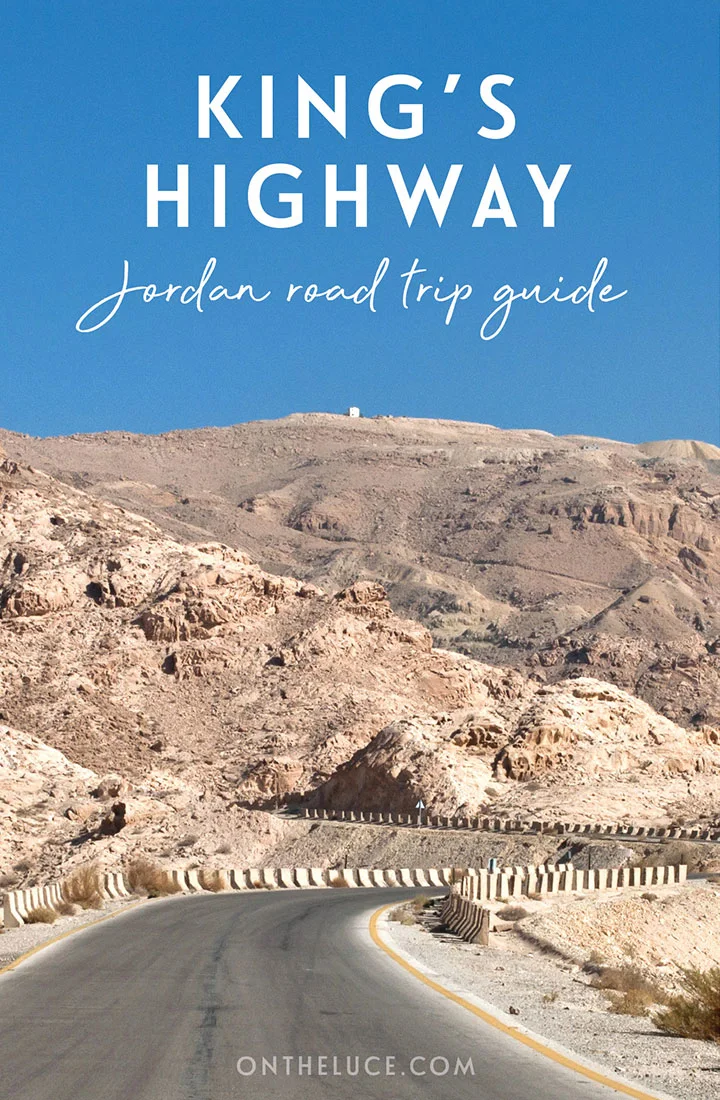
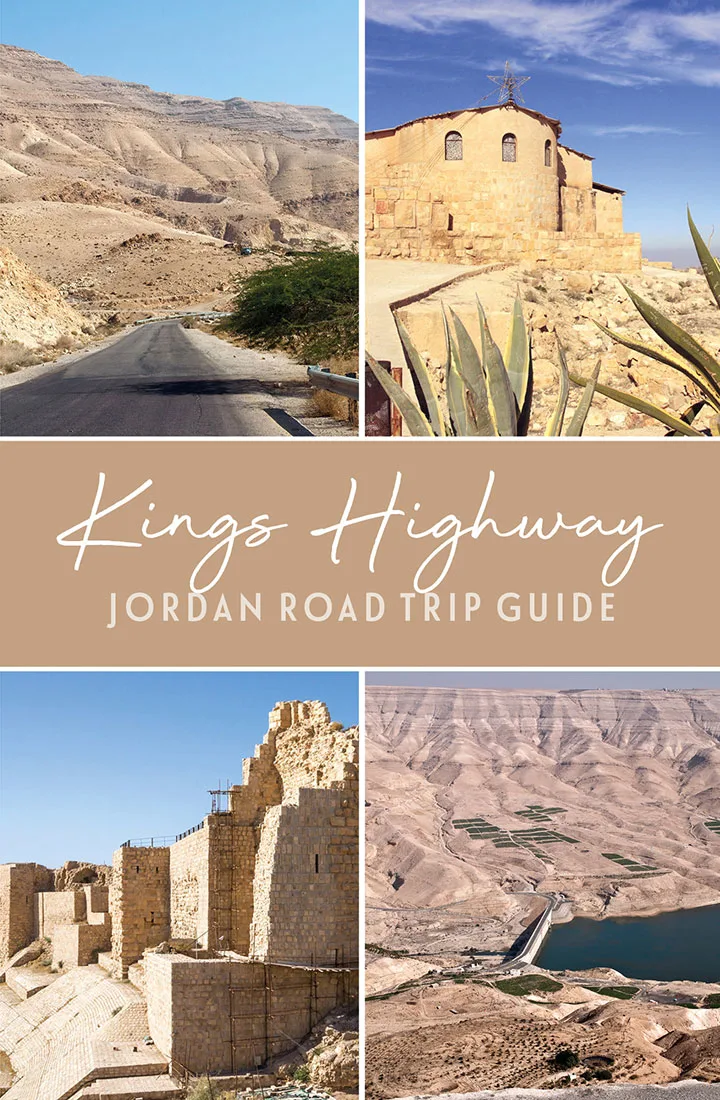

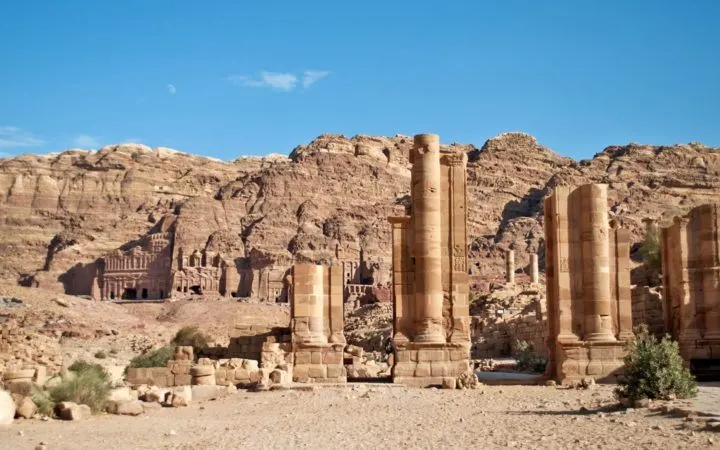
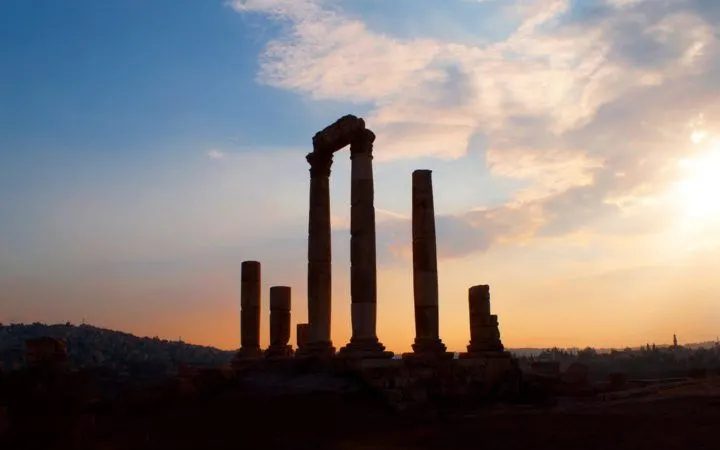
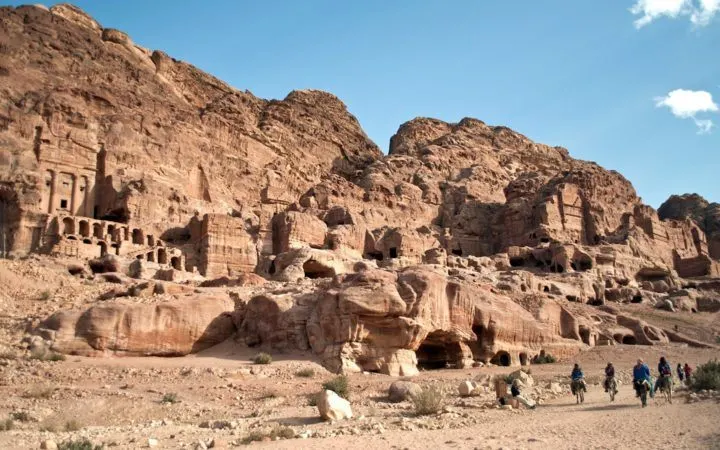
Claire
Tuesday 14th of March 2023
Another great Petra post! Thank you! Between this and your other posts on Petra you have almost convinced me that I really can do a road trip there. Thank you for such encouraging posts!
Lucy Dodsworth
Saturday 1st of April 2023
Thanks so much, hope you have a wonderful trip!